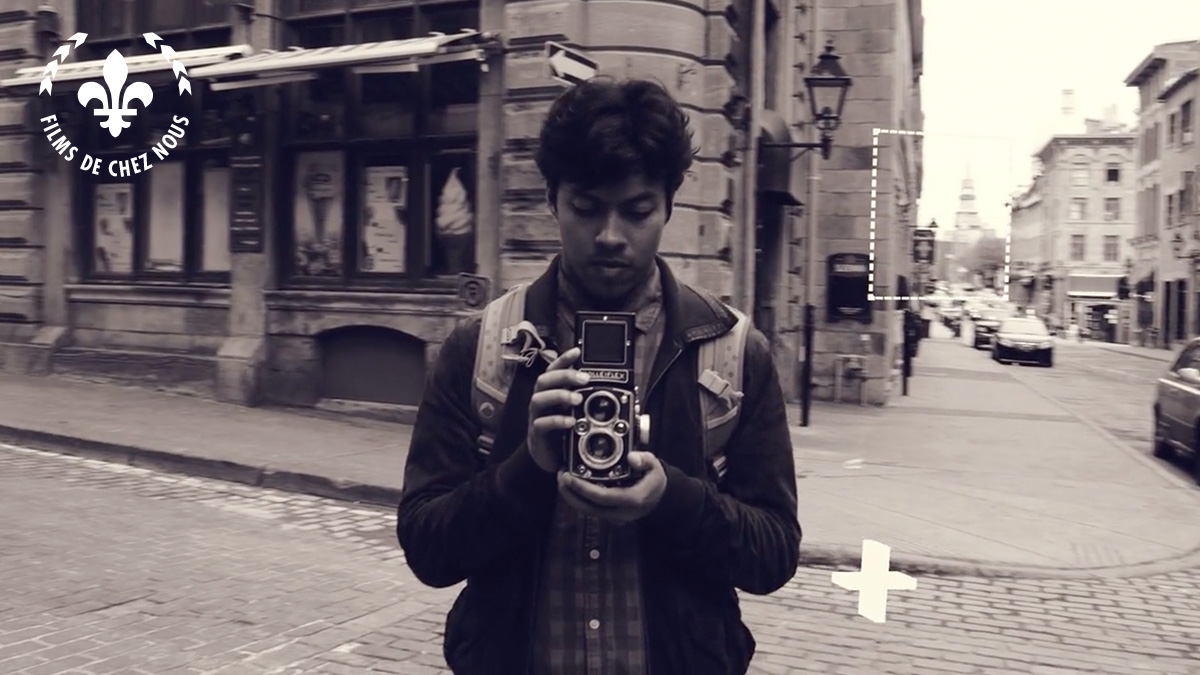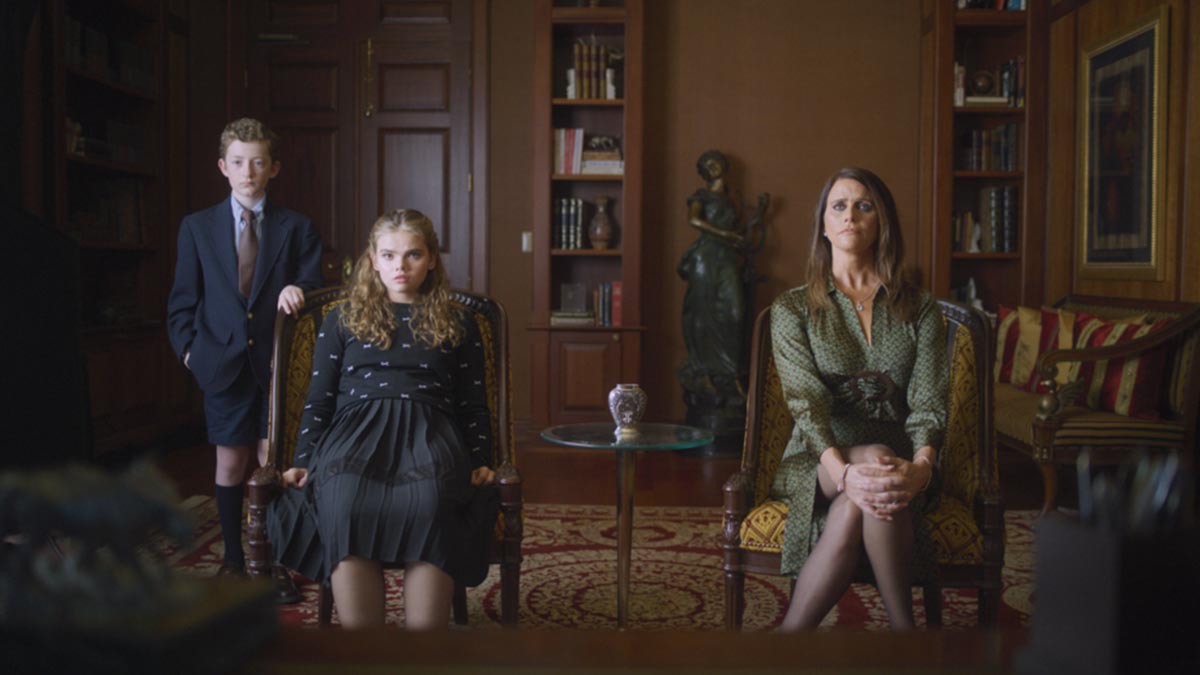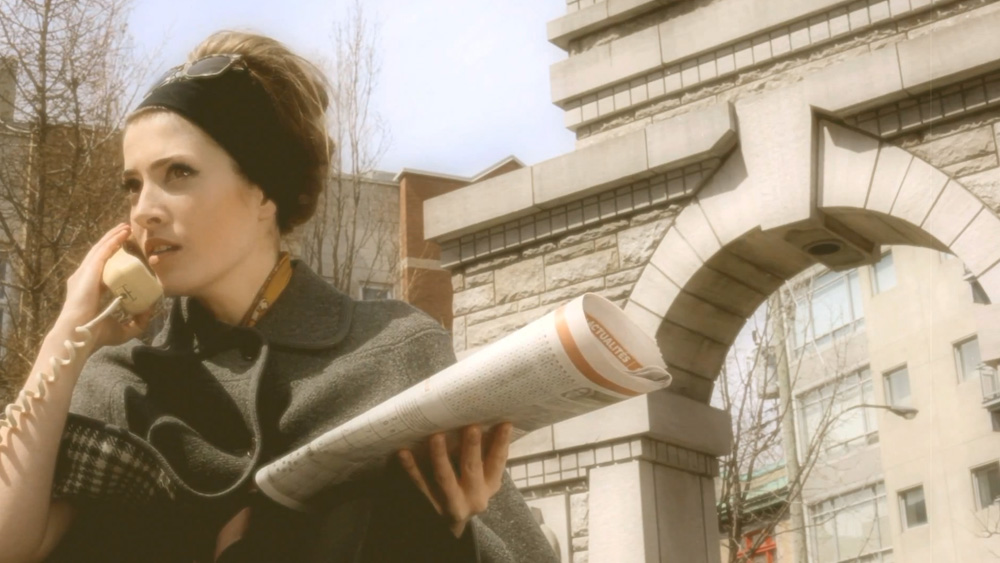As a looming danger threatens their home, a father and daughter find shelter within a world of imagination.
In a world torn apart by senseless war and strife, director Alexis Gomez invites audiences on a poignant journey with his short film, “Bumbumpapá.” This emotionally charged narrative explores a haunting question: when darkness seems all-encompassing, can the flicker of hope still be found? Through the lens of a father’s unwavering love for his young daughter, “Bumbumpapá” unravels a powerful story of resilience and the enduring innocence of childhood in the face of harrowing adversity.
The film delves into the life of a father who, amidst the chaos of conflict, is determined to shield his daughter’s joyful innocence from the harsh realities that surround them. As war irreversibly alters the lives of countless families, the father’s commitment to preserving the light in his daughter’s heart becomes a symbol of hope in a bleak and unforgiving world. “Bumbumpapá” serves as a moving testament to the indomitable human spirit and the enduring power of love, offering a glimpse into the profound connection between a parent and child, even in the most challenging of circumstances.
Director Alexis Gomez crafts a heart-wrenching narrative that resonates with audiences on a deeply emotional level. “Bumbumpapá” is a reminder that, even in the darkest of times, the bonds of family and the determination to protect innocence can serve as beacons of light, illuminating a path through the bleakest of moments. This short film is a testament to the resilience of the human spirit and the enduring capacity for hope in the face of adversity. We spoke with Alexis who gave us insight on his process and inspirations:

What inspired you to create a film that explores the theme of imagination and escapism in the face of adversity?
I find great joy and responsibility in sharing stories that inspire a luminous perspective. Darkness can be represented in so many different ways, but it’s a universally understood concept. The question is how we respond when we find ourselves in that place.
With Bumubmpapá in particular, we were curious to explore the vulnerability that manifests in truly precarious circumstances. In our story, the darkness is personified by the imminent danger of war – something that we are becoming increasingly familiar with in our world. The character of our father can’t stop the darkness entirely; he can only create a moment of guiding light to bring hope to his young daughter. Hopefully, his example teaches us how to fight for hope during times of war, fear, and vulnerability.
When I started bouncing ideas with Vincenzo (screenwriter) about what story to tell, we talked about themes that were essential to us. Vincenzo showed me a video that he had saved in his file that talked about fatherhood and turning pain into play. Right as we began to develop the project, the war in Ukraine broke out. That was the precise moment we realized that this story needed to be told and knew that it had the potential to help the world in some way. For the same reason, Bumbumpapá metaphorically portrays a threat that is universal, a fear that can come knocking at our door.
We aim for this story to reach people in an intimate, transformative way and that it guides and inspires viewers to find hope in their lives. We have created this piece with a lot of heart and vulnerability, the starting place for those who are looking for light in the dark places they find themselves.

The film deals with the impact of war on families. How did you approach the challenge of conveying such a heavy theme in a short format?
We focused on the small, intimate moments of connection that exist within larger political conflicts, attempting to portray a very human way to confront the chaos. Each person has a distinct form of surviving physically and emotionally through danger, and by portraying imagination as a coping strategy, and how this attempt would unfold in a spontaneous, subtle way, we hoped to express how we can influence and shape aspects of our reality, even in the most challenging circumstances.
Could you tell us about the significance of the title “Bumbumpapá” and how it relates to the story and characters?
The title plays with the central theme wherein the father makes a game out of the difficult reality they are facing – creating something new and playful from their situation. In the case of Bumbumpapá, it signifies a moment in which the father makes a sort of rhythm and song out of the sound of the bombs exploding, or the sound of sirens.
The father-daughter relationship is at the heart of the film. Can you discuss the casting process and the chemistry between the actors that brought this relationship to life?
Since the first conversations, Alfonso Dosal has been among our favorites. It was clear that he would be the one after our first call together; something clicked there. For Irina, the process was a little less serendipitous. Together with casting director Mandoki, we created a space where we could audition and meet diverse kids for the role. Irina ended up playing a completely different game than everybody else, understanding it and still playing it to the fullest – which I suppose is what acting is all about.
The film is about imagination and its repercussions on our reality. So, we did just that in rehearsals – placing them in a room and letting their imaginations run wild. Alfonso started creating his own world alongside Irina, both fully immersing themselves in this realm of fiction.
The magnetic and honest connection that developed between the two main characters – Lara (Irina) and Albert (Alfonso Dosal) was very unique. It was wonderful to see how their interactions grew throughout the process – from casting to rehearsals to the in-between moments during production, as they built a great friendship that was reflected in the dynamics of acting improvisation on set.
My favorite moment was when we filmed the last scene; when Alfonso Dosal is hit after the big explosion. Since it was such a shocking scene, we decided to keep Irina on the first floor without being able to see what was happening. We started shooting and Alfonso started whistling, making the call and the sound that unites the characters. In response, from below, we heard Lara’s response whistling back. It was a moment that moved us all.

The use of imagination as a coping mechanism is a central theme. How did you work with the actors and the production team to visually represent this concept?
This was one of those set experiences where everybody brought their best attitude and effort; it was intense. Alfonso Dosal’s magnetic skills and Irina’s presence made the set a wholesome experience, almost as if the story continued between shots. The entire crew felt like they were witnessing the movie unfolding right before their eyes, and shooting chronologically motivated us all to push through to the final scene. It felt reminiscent of theater due to the impact it had on the crew. The film enveloped us in a very special and profound way.
The film’s tone is both somber and hopeful. Can you share the creative decisions that went into balancing these contrasting emotions?
Bumbumpapá is a story of dualities: life and death, reality and fantasy, the chaotic world outside vs. the emotional sanctuary represented by the house. These dualities were also an experience that I learned to live throughout the creative process. It is very powerful to see that in life we live contradicting emotions on a constant basis. I learned that within stress there can also be enjoyment, and where there is creation, there is also doubt. Representing these dualities in a piece was a great exercise of growth, to accept that on occasion we feel lost in the creative process, and in other moments we will find hope and inspiration to create.
From the very beginning, we felt a strong connection to the story. We have never lived in the midst of shelling and bombings, but we know how it feels the urge to protect someone you love, the struggle to explain the unexplainable, and the fear of the unknown. The project was developed during a challenging time when a loved one was diagnosed with cancer during the pre-production process. It was a tough and emotional experience, but it also magically gave the project a deeper level of meaning and purpose: in the end, it was all about creating a world of peace, fantasy, and safety for someone you love.
And if fear is the opposite of love, then we are talking about both here. This story celebrates this final outpost of humanity: the generosity of imagination. Through one of the most painful and unnatural situations imaginable – that of a parent witnessing their daughter’s potential last moment – perspective and compassion bring us a universal story we believe is worth telling.
The film’s setting appears to be in a war-torn world. Can you elaborate on the challenges of creating this dystopian environment within the constraints of a short film?
Throughout the project, we focused on the importance of telling simple and universal stories, starting with the basics: a location, two characters, no dialogue, a conflict, and a resolution. This helped us focus on each sequence to develop a complex evolution. It is crucial to know that simple stories have a degree of complexity in the details, in the dynamics of non-spoken dialogue, and in the way of exemplifying this story.
For example, in the art department, this involved reconstructing the location so that it was more aligned with our story. We painted all the walls a very specific blue, built walls, and brought in all the furniture (we were even able to bring in an old piano.) By focusing on a single location we were able to invest time and budget into this space.
Music plays a significant role in the film. Could you discuss the importance of the film’s score in enhancing the emotional impact of the story?
We felt that the dualities present in the story of Bumbumpapá were best represented and supported through sounds and textures that converge in the various key moments of the film. For example, when we hear raw and hostile sounds, there is a moment when we begin to introduce warm, comforting sounds, almost as if we were portraying the sound of a hug. We approached it almost like a dance, where at one moment one side has more prominence, and at another moment the other gains more strength.
Our editor Conrado Lopez conducted a deep investigation into the world of our film in order to develop our auditory language and did an exceptional job in finding the right sound and texture for each scene. After closing the edit, we focused on strengthening the music and sound design with BDS music. This was a wonderful experience that allowed us to continue to add layers to this narrative dance.
Finally, all the post-production work was essential to unify and strengthen the narrative we are telling. GlobeTrotter’s work on VFX helped us build the atmosphere: we created columns of smoke, explosions, and vibrations. Through color, we made the skies gray, desaturated the color, and gave life to the golden and warm color of the final light. It is impressive how the piece becomes stronger through these details, creating a unique essence.

“Bumbumpapá” has a unique visual style. What were the influences and inspirations behind the cinematography and production design?
In terms of visual language, we primarily studied the work of Abbas Kiarostami and Pawel Pawilkowski. I am greatly inspired by watching films that utilize a subtle filmic language so that the viewer can form their own world supported by their personal experience. On a conceptual level, Andrei Tarkovsky is an eminent reference.
What are some of your favorite short films?
Atlantiques – Mati Diop
Sepio – Frans Van de staak
Brothers – Robert Eggers
What Do You Know about the Water and the Moon by Jian Lou




